There’s a new resident spinning stories in silk at the ranch—and she’s not shy about showing off her handiwork. Meet the yellow garden spider, Argiope aurantia, also known as the “writing spider” for the bold zigzag design she weaves right through the center of her web. She’s a stunning creature, easy to spot with her vibrant black and yellow markings and long legs that stretch across her web like a living compass.
This particular spider spun her web right between some equipment near the gravel, as if to say, “This is mine now.” And who could argue? Watching her work in the early morning light, with dew clinging to the fine strands of silk, is nothing short of mesmerizing.
Nature’s Pest Control
While her appearance might give some people pause, the yellow garden spider is nothing to fear. In fact, she’s a welcome guest. These spiders are master hunters, feeding on flies, grasshoppers, moths, and other garden pests that would otherwise cause trouble around the property. Once prey is caught in the web, she moves quickly, biting and wrapping it in silk—efficient, silent, and undeniably elegant.
The Signature Web
Perhaps the most fascinating aspect of the yellow garden spider is her “signature”—a thick, zigzagging band of silk called a stabilimentum. Scientists aren’t entirely sure why she includes this in her web. Some think it’s to attract prey by reflecting UV light, while others believe it warns birds not to fly through it. Either way, it’s a striking visual that earns her the nickname “writing spider.”
Old Southern folklore even says if you see your name written in a web, it’s a bad omen. Thankfully, this gal keeps her messages abstract and artistic.
Living in Harmony
At the Ranch, we strive to work with nature, not against it. The yellow garden spider is a reminder that not all bugs are bad—and some are downright beneficial. By leaving her be, we support a balanced ecosystem. And frankly, watching her work her craft is better than most reality TV.
So next time you spot a yellow garden spider perched in her web, take a closer look. Admire her geometry, her patience, her precision. She’s not just surviving—she’s thriving, and doing it with flair.
A Final Thread of Life
As summer fades into fall, the writing spider prepares for her final act. She’ll spin a large, papery egg sac—often tan or brown, shaped like a teardrop—and attach it securely to a hidden corner of the web or a protected structure nearby. Inside that sac are hundreds, sometimes over a thousand, tiny eggs: her legacy wrapped in silk.
She’ll guard it as long as she can, but when the first frost arrives, her work is done. The adult spider will die with the cold, leaving her egg sac behind to overwinter. Come spring, her offspring will hatch, bursting forth in a cloud of tiny spiderlings ready to drift into the wind on silken threads—each beginning the cycle anew.
Even in death, the yellow garden spider leaves behind a gift—another generation of silk-spinners, ready to take up the craft.

